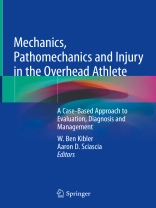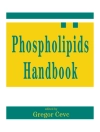As clinical interest in overhead athletic injuries is on the upswing, so is greater interest in the factors for performance and injury risk in throwing and other overhead motion. This practical, case-based text is divided into two sections and will present the basic principles of overhead athletes followed by unique clinical case presentations describing different aspects of performance, injury and management in throwing and other overhead athletes.
Part I discusses the mechanics and pathomechanics of the overhead motion, along with principles of evaluation, the physical exam, surgical management of both the shoulder and elbow, rehabilitation and return to play, injury risk modification, and the role of the scapula. Unique clinical cases comprise all of part II and follow a consistent format covering the history, exam, imaging, diagnosis and outcome of the chosen intervention. These cases illustrate a cross-section of sports and activities, from the baseball player to the swimmer, and a range of shoulder and elbow problems in pediatric and adult overhead athletes
Providing a unique case-based approach to a growing hot topic, Mechanics, Pathomechanics and Injury in the Overhead Athlete is an ideal resource for orthopedic surgeons, sports medicine specialists, physiatrists, physical therapists, certified athletic trainers and allied medical professions treating active persons of all ages.
Tabella dei contenuti
Part I: Basic Principles of the Overhead Athlete.- Mechanics of the Overhead Motion.- Pathomechanics and Injury in the Overhead Motion.- When Load Becomes Overload.- Information Gathering for Evaluation and Treatment.- Principles of Comprehensive Evaluation.- Principles of Surgical Evaluation and Techniques: Shoulder.- Principles of Surgical Evaluation and Techniques: Elbow.- Principles for Rehabilitation in the Overhead Athlete.- Criteria and Expectations for Return to Play.- Principles of Injury Risk Modification..- Measurement of Outcomes.-
Part II: Clinical Cases of the Overhead Athlete.- 12 y.o. baseball: when to specialize, basics of instruction, role of camps.- 15 y.o. tennis: sore shoulder, no obvious injury.- 16 y.o. softball pitcher: sore shoulder.- 16 y.o. baseball: sore elbow.- 18 y.o. male thrower: AC joint injury.- 19 y.o. thrower: shoulder injury.- 20 y.o. female swimmer: sore shoulder.- 20 y.o. thrower: elbow injury.- 22 y.o. female tennis player: MDI, shoulder pain.- 22 y.o. thrower: grade 2 AC injury and SLAP.- 24 y.o. thrower: dislocation sliding into base.- 25 y.o. recreational athlete: chronic shoulder pain, increased symptoms.- 27 y.o. thrower: failed “labral repair”.- 28 y.o. volleyball player: sore shoulder.- 32 y.o. recreational athlete: labral, biceps, partial rot cuff.- 40 y.o. recreational: rotator cuff tear and repair.- 50 y.o. female masters swimmer: sore shoulder.- 65 y.o. tennis/golf: post TSA.- 60 y.o. athlete: mild shoulder arthritis.- 65 y.o. tennis/golf: post TSA.
Circa l’autore
W. Ben Kibler MD, Shoulder Center of KY, Lexington Clinic, 1221 S. Broadway, Lexington KY 40504
Aaron D. Sciascia, Ph D, ATC, PES, Eastern Kentucky University, Richmond, KY, USA












